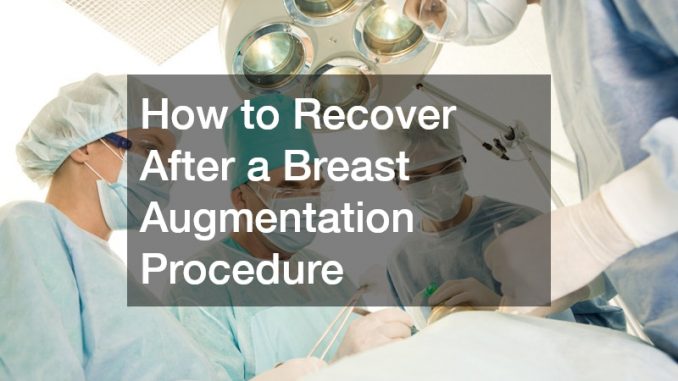

In the journey of enhancing one’s physique through breast augmentation, understanding the recovery process is crucial. This article aims to guide you through the most frequently asked questions surrounding recovery after a breast augmentation procedure.
What Should I Expect Immediately After Surgery?
Patients immediately following breast augmentation surgery will typically experience a combination of swelling, bruising, and discomfort around the augmented area. It is essential to follow your surgeon’s care instructions diligently to promote healing and minimize the risks of complications.
Initial care usually involves wearing a support bra, avoiding direct pressure on the breasts, and adhering to prescribed medications.
The first few days post-surgery are often the most challenging, as the body reacts to the surgical procedure. Expect to spend this period mostly resting, while gently moving around to promote circulation and prevent blood clots. Keeping the upper body elevated even while sleeping can significantly help reduce swelling and enhance comfort.
Regular follow-up appointments with your healthcare provider are crucial during this phase to ensure the healing process is on track. Your surgeon will provide personalized guidelines on the dos and don’ts, along with adjustments in care as your recovery progresses. Communication with your medical team helps quickly address concerns like redness or unusual pain.
How Can I Manage Discomfort and Pain?
Pain management is a key aspect of breast augmentation recovery, often starting with prescribed medications such as acetaminophen or more potent pain relievers. Effective pain relief is vital to improve comfort and promote restful sleep, enabling your body to repair more efficiently. Consistent intake as advised by your healthcare provider can significantly improve the recovery experience. It’s also important to monitor for any side effects and report them promptly to ensure safe and effective medication use.
In addition to medications, several natural pain relief methods can complement recovery, including cold compresses and relaxation techniques such as deep breathing exercises. Cold packs applied intermittently can help reduce inflammation and numb discomfort, though direct ice should be avoided to protect sensitive tissues. These non-invasive options can be beneficial during the initial days when discomfort peaks.
Another viable strategy involves exploring complementary therapies, like guided imagery or meditation, which can help manage discomfort perception. Non-medical methods are important allies in creating a balanced approach to alleviating postoperative pain, enhancing physical and emotional well-being during recovery. Incorporating these practices into your daily routine can also foster a sense of control and calm throughout the healing journey.
What Activities Should I Avoid During Recovery?
Knowing which activities to avoid following breast augmentation surgery is vital for preventing complications and ensuring optimal healing. Strenuous physical activities, such as heavy lifting or intensive exercise, should be postponed for a minimum of 4-6 weeks based on your doctor’s advice. Emphasizing gentle movement and daily walks instead promotes blood flow without straining the healing incisions.
While eager to resume normal routines, patients must prioritize rest and adhere to movement restrictions. Simple actions like bending or reaching overhead are discouraged initially, as these can inadvertently stress the surgery site. Listening to your body and gradually increasing activity levels ensures steady progress towards full recovery.
The timeline for resuming more vigorous activities varies by individual and should always be guided by medical consultations—consistently checking with your surgeon before reintroducing exercises is crucial. Adhering strictly to recovery protocols can significantly reduce the risk of complications and help achieve desired surgical outcomes.
When Can I Expect to See the Final Results?

Patience is key when anticipating the final results of a breast augmentation procedure, as full recovery encompasses multiple stages. Typically, most major swelling diminishes within a month, though residual swelling can persist for several weeks beyond this point. Visible results continuously improve during this time, as tissues adjust and settle. During this phase, it’s important to follow post-operative care instructions closely to support optimal healing and aesthetic outcomes.
Full realization of the surgery’s effects generally occurs after several months, once the body has completely acclimated to the implants. Remember that factors such as individual healing rates, implant type, and surgical techniques influence this timeline. Regularly attending follow-up appointments aids in aligning expectations with observed progress and overall satisfaction. These check-ins also allow your surgeon to monitor healing and address any concerns before they become complications.
Visible scars continue to fade gradually over time, benefiting from proper care with moisturizers and sun protection. Establishing realistic expectations and understanding this varying timeline helps maintain positivity and confidence, ensuring a satisfactory postoperative experience and transition to the enhanced physique. In some cases, your surgeon may recommend scar treatments or silicone gels to support the healing process further.
Recovering from a breast augmentation procedure is a journey that requires patience, care, and adherence to professional medical advice. By understanding these key aspects of the recovery process, individuals can ensure a more comfortable and successful transition to their enhanced physique. Embracing the recovery period as an essential part of the transformation can also promote emotional well-being and body confidence.